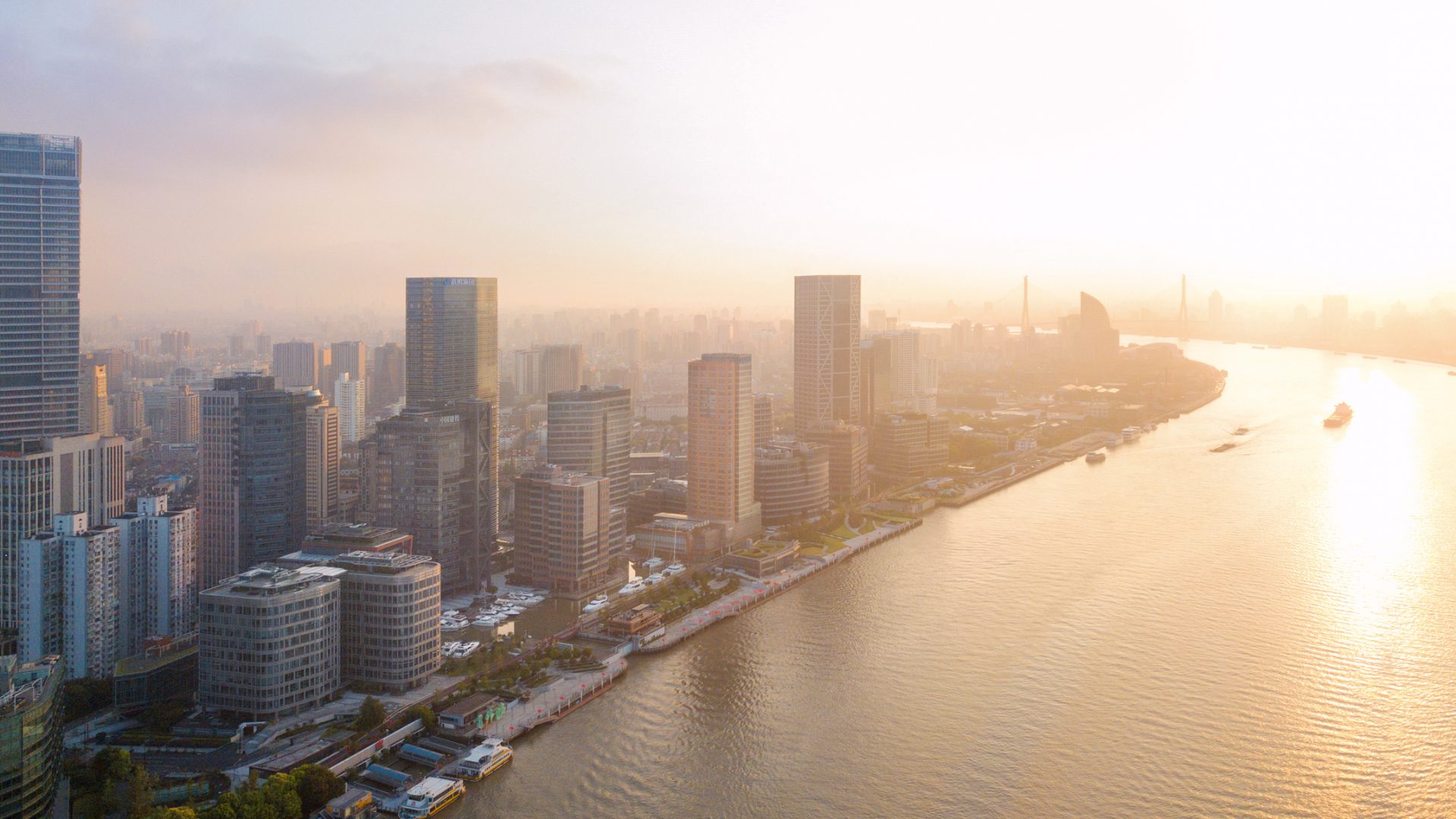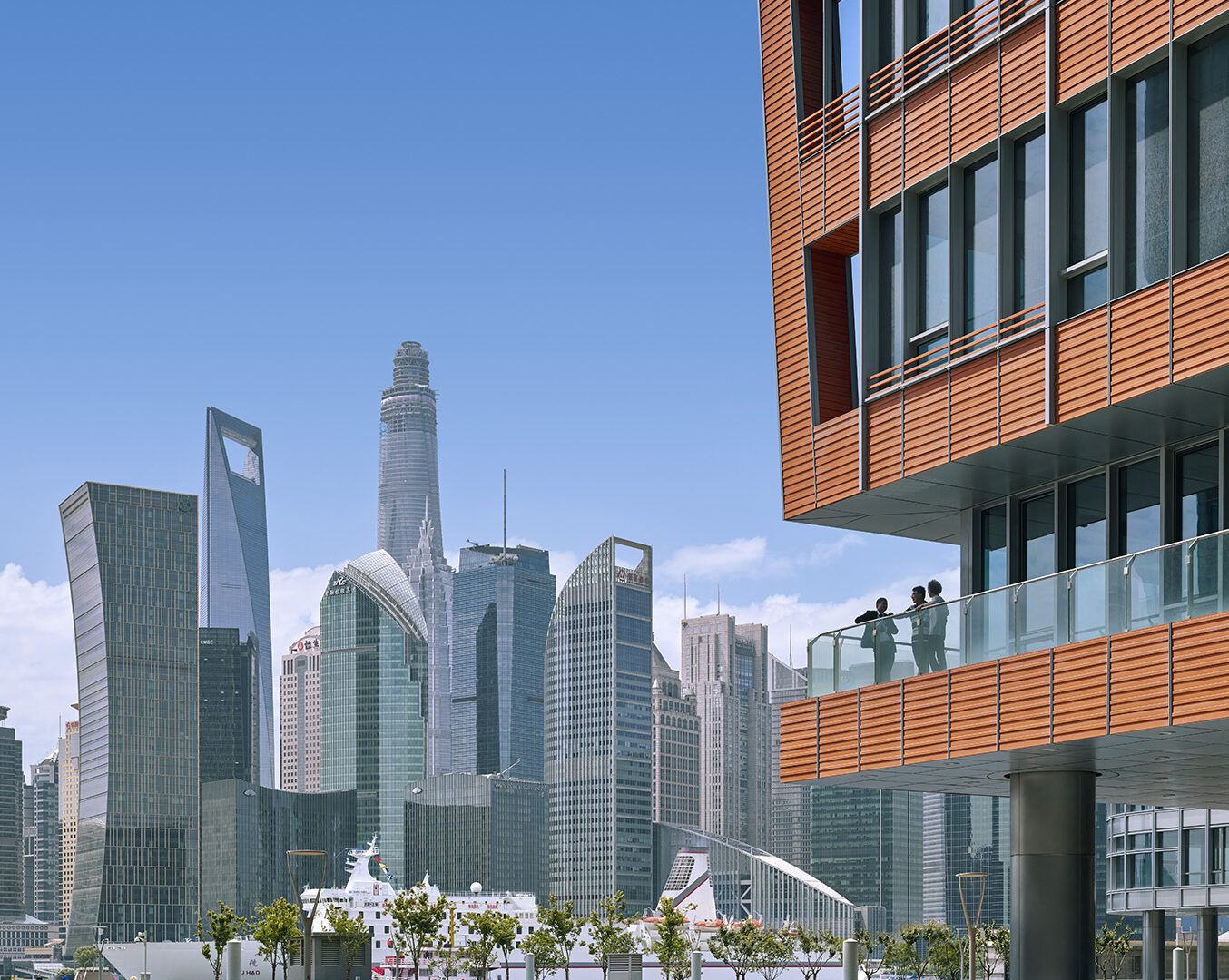With a focus on improving civic life and attracting business investment, Perkins Eastman designed a lively destination, improving upon a long-forgotten stretch of Shanghai’s Hongkou District waterfront. Comprised of eight buildings framing a marina, a public plaza, and a riverfront esplanade, this massive multi-use development integrates thoughtful planning, innovative architecture, and state-of-the-art sustainable design. North Bund is a popular riverside setting, a unique workplace and business hub, and a destination for recreation and leisure that draws people from across Shanghai.

Huishan North Bund:
A Case Study
Shanghai
A vibrant, urban neighborhood unites Shanghai with a reimagined waterfront, inviting all to enjoy a public realm with views of the iconic Pudong skyline and the bustling Huangpu River.
Project Facts
Client:
Shanghai Yinhui Real Estate Development Co.
Size:
250,800 sm
Services:
Urban Strategy, Sustainable + Resilient Design, Waterfront Design, Architecture Design
Sustainability:
LEED Gold certification
BREEAM Excellent certification
China Green Building Assessment Standard 3-STARS certification
BREEAM Excellent certification
China Green Building Assessment Standard 3-STARS certification
Markets:
Large Scale Mixed-Use, Planning + Urban Design
Region:
China
News
Awards
2021 Planning Design Merit Award - China Real Estate & Design (CRED)
2019-2020 Office Project Merit Award - China Real Estate & Design (CRED)
Highly Commended: Office Architecture in China, Asia Pacific Property Awards (2016)
Sustainable Design Award, AIA Hong Kong (2015)
Merit Award, Urban Design, AIA Hong Kong (2015)
Silver, Best Urban Regeneration Project, MIPIM Asia Awards (2015)






